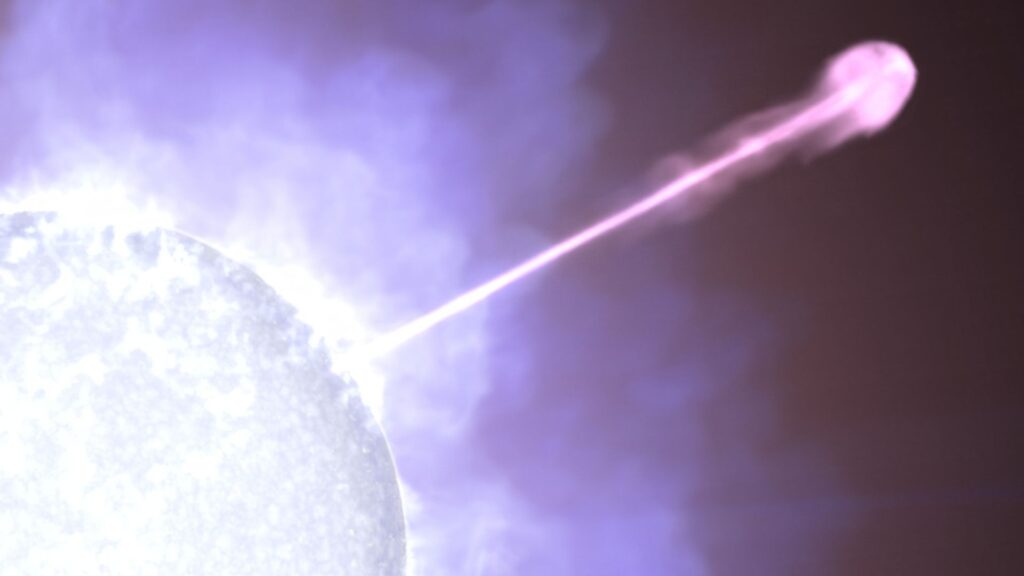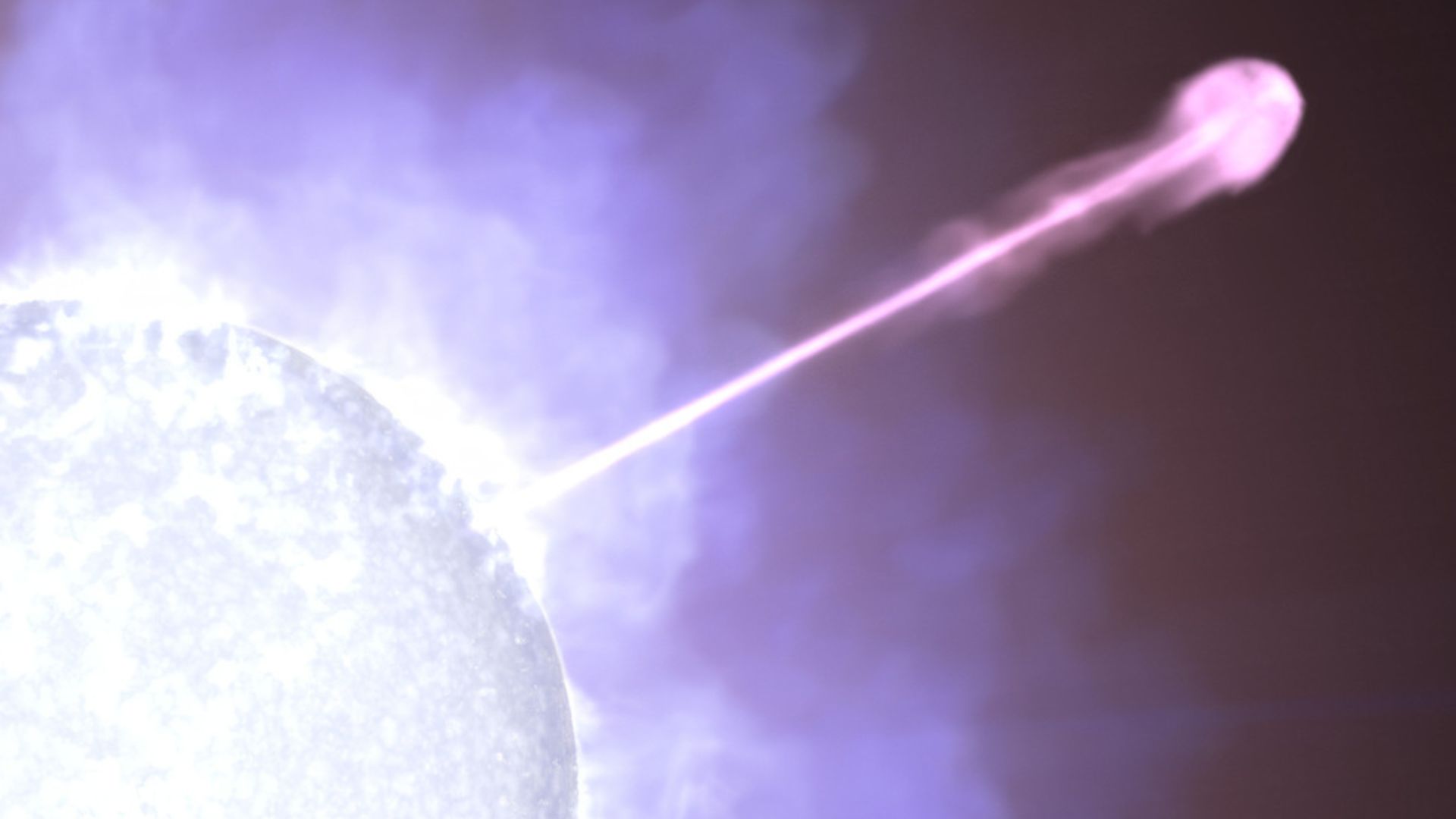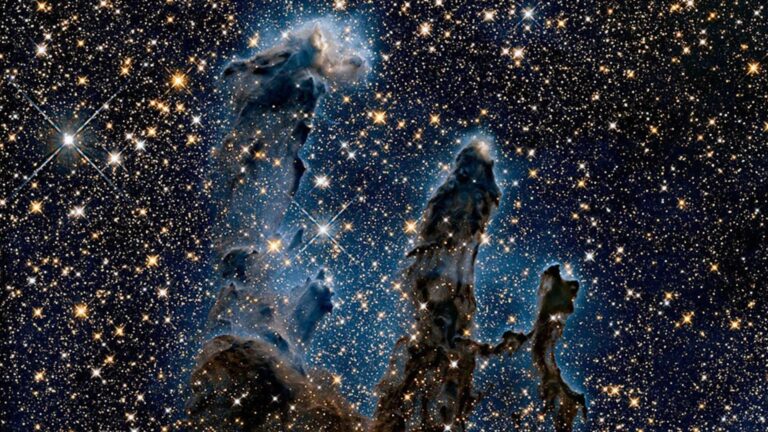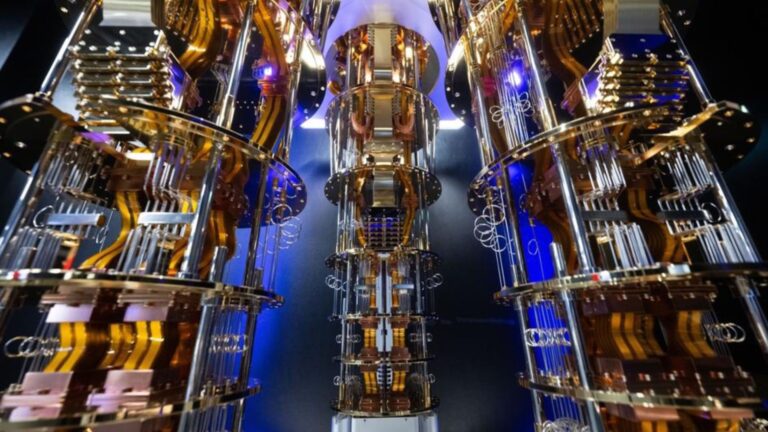
Credit: NASA’s Goddard Space Flight Center Conceptual Image Lab
Image description: Against a cloudy white and purple background, part of a bright blue-white star is visible at lower left. Emerging from the star and stretching diagonally across the frame is a narrow line, looking white nearest the star and becoming magenta farther away. At far right, the line — one of the dying star’s particle jets — forms a large, rounded blob. The image is watermarked “Artist’s concept.”
An international team has captured the first direct evidence of a newborn neutron star’s “heartbeat” within a distant gamma-ray burst (GRB), confirming that some of the universe’s most powerful explosions are driven by rapidly spinning magnetic cores rather than black holes.
Breakthrough Observation in GRB 230307A
On March 7, 2023, detectors recorded GRB 230307A, the second brightest gamma-ray burst ever observed. Researchers from The University of Hong Kong, Nanjing University, and the Chinese Academy of Sciences analyzed over 600,000 datasets from China’s GECAM satellites and NASA’s Fermi Gamma-ray Burst Monitor, uncovering a 909 Hz oscillation lasting just 160 milliseconds—the first periodic signal ever detected from a millisecond magnetar inside a GRB (Phys.org).
PhD student Run-Chao Chen, the study’s lead author, described the finding as “like hearing the first heartbeat of a newborn star.” Published in Nature Astronomy, this observation provides the clearest proof that newborn magnetars—neutron stars with ultra-strong magnetic fields spinning nearly a thousand times per second—can power some GRBs.
Resolving the Central Engine Debate
Gamma-ray bursts, the brightest explosions known, briefly outshine entire galaxies. Scientists have long debated whether the compact remnants of stellar collisions collapse immediately into black holes or survive as magnetars. The detection of a magnetar’s heartbeat in GRB 230307A confirms that at least some bursts are driven by rapidly rotating neutron stars. Professor Bing Zhang of HKU explained, “By uncovering its hidden ‘heartbeat,’ we can finally say with confidence that some GRBs are powered not by black holes, but by newborn magnetars” (HKU Press).
Implications for Jet Composition and Emission
The fleeting pulse suggests that the magnetar imprinted its spin frequency onto the gamma-ray jet through its magnetic field. As the jet evolved and emission became briefly asymmetric, the periodic signal emerged. This supports a Poynting-flux dominated jet model—where energy is carried primarily by magnetic fields—a concept Professor Zhang proposed over a decade ago.
The discovery not only sheds light on the engines behind GRBs but also opens new avenues for studying extreme physics under conditions unreplicable on Earth. By “listening” to the heartbeats of newborn stars, astronomers gain a novel tool for probing the birth and evolution of magnetars and their role in the most energetic phenomena in the cosmos.












